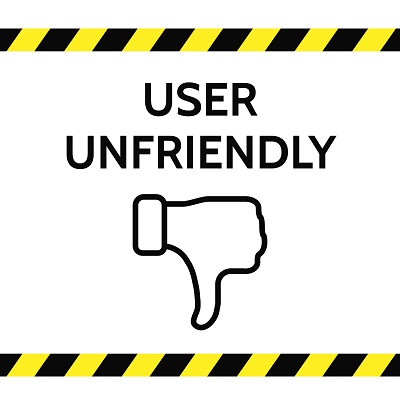Top Reasons Why Enterprise Mobility Fail
About one in every two enterprise mobile apps essentially become useless within two years of launch, leading one to suspect something ails enterprise mobility. Are the perceived benefits a big hype? Read on to find out the common pitfalls that plague enterprise mobility, and the possible solutions.
- Improper Scope
Many enterprise decision makers mistake mobile apps as an extension, or another interface for their website, and pack the app with features. Such apps are doomed to fail right from the word go. Others do an improper scope, and pack in features not relevant for the users.
Apps are simple, lean, bite-sized, personalized, and contextual. By the very nature, apps are meant to fulfil a specific highly focused task, easily and well, with minimal navigation or typing. There is nothing preventing enterprises from launching hundreds of apps to cover the entire gamut of functionality possible through the website, but packing all such features into a single or even a few apps is a sure route to disaster.
- Failure to Prioritize
An average enterprise has 700+ business applications. Offering a mobility solution to even 10% of such applications would require 35 years, considering a minimum of six months of development time for each app. Of course, the latest rapid application development techniques, no-code or less-code app development strategies, and the possibilities of developing more than one app simultaneously makes 35 years an exaggeration, but the fact remains trying to offer mobility solution for everything may be too big for the company’s boots. A successful mobility strategy requires intelligent prioritization, rolling out mobility solutions for processes and services that need it most, such as field service and marketing work, and then widening the net, one function at a time.
- Poor User Experience
About 78% of enterprise mobile apps are abandoned after the first use. The reasons vary, but single biggest pitfall is failing to cater to the user. No matter how good the features and functionality of the app, it won’t succeed unless users actually download and start using it.
A 2014 Forrester study estimates 64% employees rarely using enterprise apps, owing to poor user experience. If the app, instead of making things easier for the end-user, actually makes it harder, or makes no difference, there is no reason why users would change over from something that is already working for them. Many developers replicate the existing business process without considering simplification of complex processes.
Many app developers, having to deal with a number of pressing issues, do not give user experience the importance it deserves. Enterprise app developers need to think like a user, how they would prefer to use the app, and how they would benefit from it. Unless the apps are easy to use and have a user-centric designed, it is sure to fail. The enterprise needs to not just make sure the apps solve a pressing need and is easy to use, but also communicate with the users to drive home the benefits. If required, they need to also train users on how to use the app and derive benefits out of it.
- Lack of Adequate Groundwork
Side-by-side with poor UX, obsolete technology may also impede app acceptance. Many enterprises continue to use legacy systems not compatible with mobile services or have their critical data trapped in silos, preventing apps from pulling in the required data. Such roadblocks leave users hamstrung, forcing them to opt for other means to get their crucial tasks done.
Also, unless the app is flexible enough to address device management, app management, content management, mobile device support, mobile collaboration, mobile network security and other crucial technical issues to match the needs and preferences of users, the odds are of the app failing even before it gets started. A good native device experience or catering to device users prefer is another crucial requirement for acceptance.
- Lack of Adequate Marketing
Personal apps available in app stores require extensive marketing and promotions to sustain and thrive. It is a misconception to think enterprise mobility apps do not require such marketing or promotion. Very few enterprise users are likely to download an app just because it is there in the recommended play store. What is different is only the nature of marketing or promotion required.
Enterprises would do well to reach out to the key stakeholders, and purchase their buy-in by making explicit the benefits of using the app, and incentivizing its use. There may also be a case to train app users.
- Security Loopholes
Many people are still wary about installing and using mobile apps, for the security challenges it poses. Their fears are not unfounded either. A 2015 IBM study reveals 40% of large corporations, which includes several Fortune 500 companies, not having the necessary precautions to prevent security breaches in customer apps.
Unsecured API access is a big security risk associated with mobile apps. At any point of time when the developer deals with business logic, validations, or access permissions, they add to the risk and multiply the layers of error-laden complexities. App developers would do well to choose role-based access, based on business logic instead.
- Risk of Inexperienced or Sleazy Developers
The developer can make or break an app, especially when there is a pressing shortage of talent. Even if the developer is talented, there is a very good chance they would end up underestimating the work and effort required, ending up making shortcuts, compromising on key features, and skipping functionalities, to meet the timeline and budget estimates.
There is also the risk of sleazy developers quoting a low estimate and painting a rosy picture to get the work and undertake shoddy implementation. Ascertain the track record of the app development partner before signing a contract.
There is no shortcut to experience, to avoid the above mentioned pitfalls. Partner with us to leverage our considerable experience, and also the expertise of our talented pool of developers. We have developed cutting edge mobility solutions for enterprises across the spectrum. Our solutions have withstood the test of time, and go a long way in transforming the enterprises in which they are deployed. Hundreds of satisfied clients stand testimony to our expertise in developing enterprise mobility solutions.
Stay up to date on what's new

Recommended Posts

21 Jul 2023 B2B
How Biometric APIs Will Replace Passwords on Mobile Apps
Technology successively progresses all around us; from the simplest basic Google searches to the working of aircraft, technology has indented its value in everyday life. Biometric APIs are not a……

22 Nov 2022 B2B
React Native, Flutter, Ionic, Xamarin – A Comparison Between The Top Mobile App Development Frameworks
Frameworks are the backbone of mobile app development. They are essential to building dependable apps quickly. When choosing a framework, you can choose between native or cross-platform applications. Though both……

14 Jan 2022 B2B
Know The Main Price Drivers Of App Development In 2024!
Everyone uses software products. From toddlers to grandparents, in one way or the other, almost everyone has used a software product. The number of mobile devices operating worldwide stood at……

10 Dec 2020 Retail
Top Technologies Used to Develop Mobile App
Top Technologies Used to Develop Mobile Apps Table of Contents Top Technologies Used to Develop Mobile Apps Five Major Programming Languages Used To Develop Mobile Apps Today Top Tools That……
Featured Blogs
Stay up to date on
what's new






















































